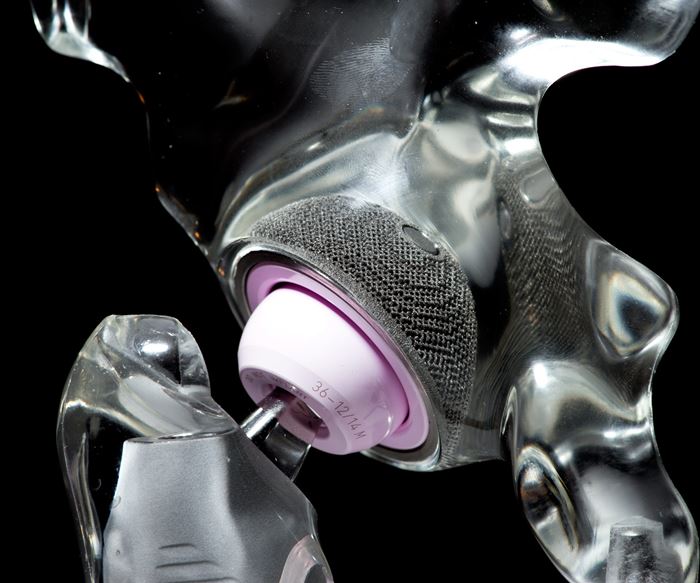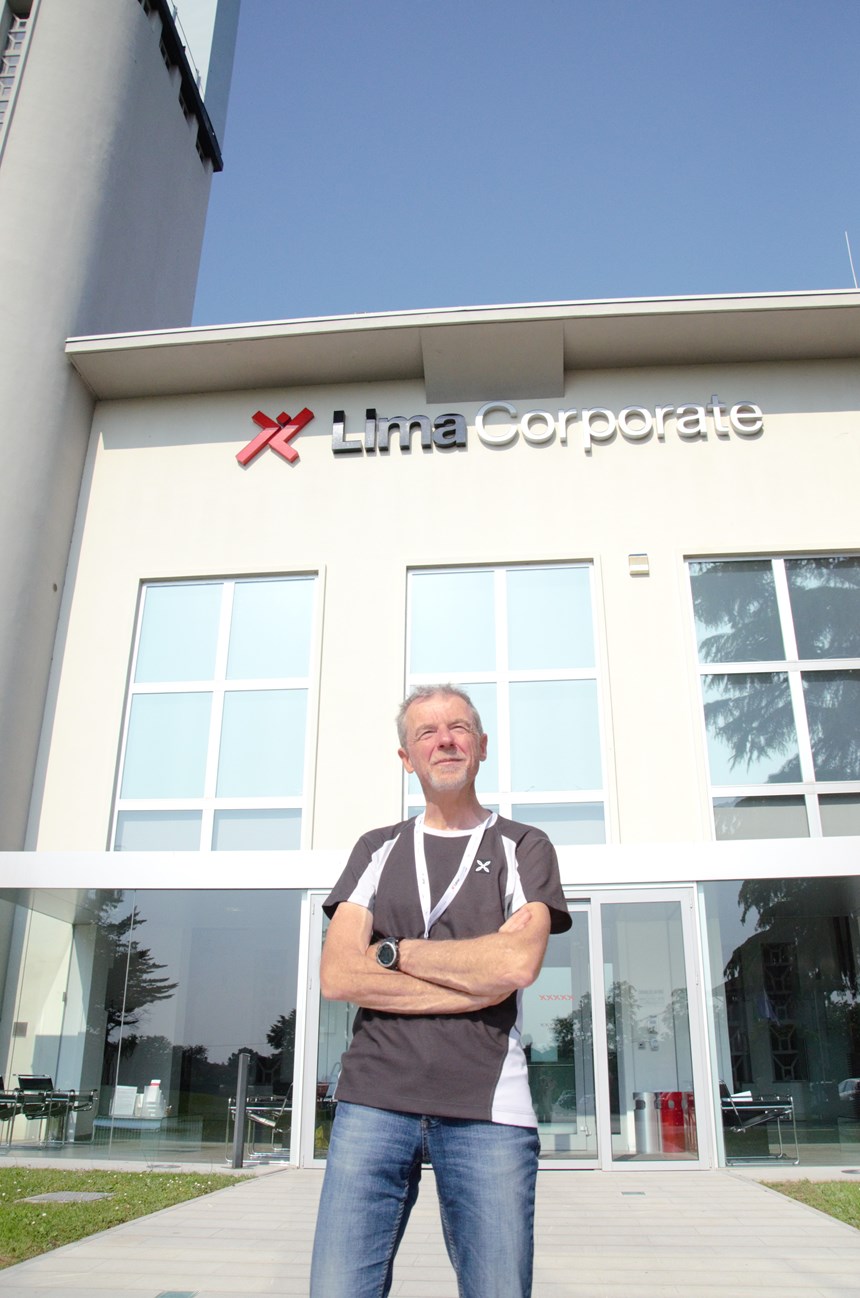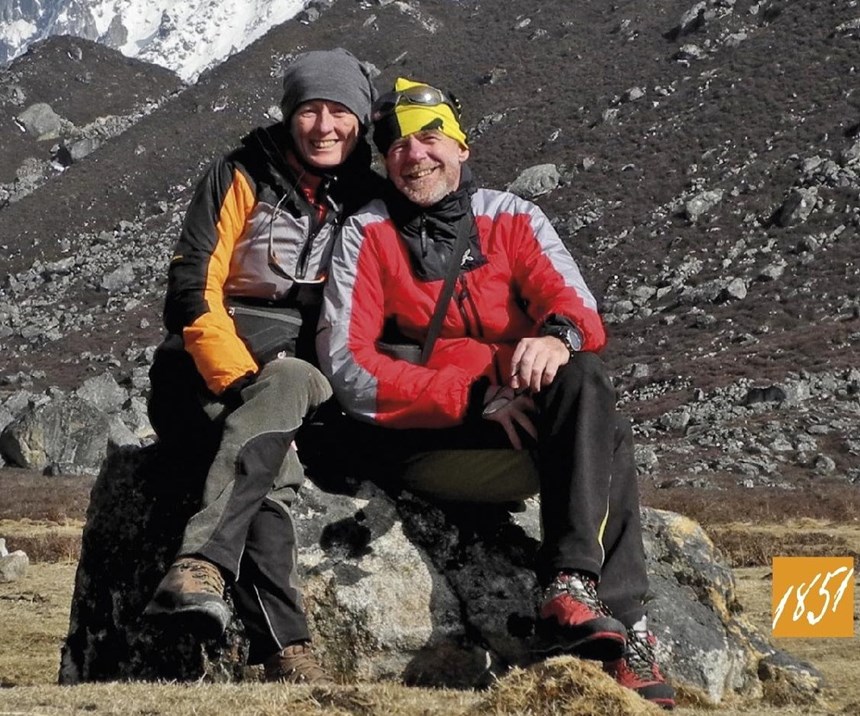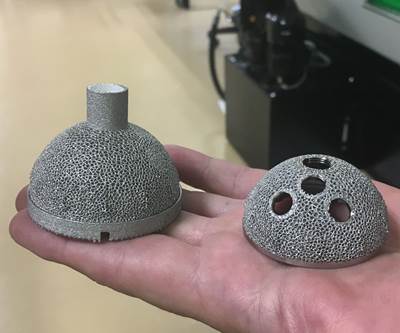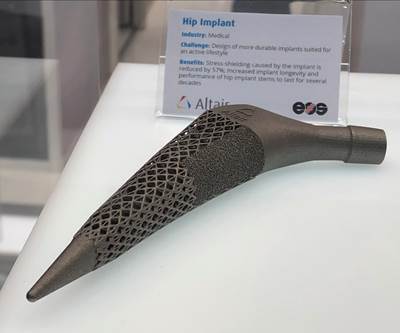3D Printed Hips Versus the World's Deadliest Mountain
3D printed trabecular titanium hip implants—printed by Lima Corporate on Arcam EBM machines—helped legendary Italian mountaineer Romano Benet to continue scaling the world's most dangerous peaks.
Last year when Romano Benet and Nives Meroi reached the summit of the Annapurna Massif—the highest peak of the Himalayas in north-central Nepal—the husband and wife mountaineering team became the first couple to climb all 14 of the world’s so-called “eight-thousanders.” Of the 14 peaks on planet Earth that reach at least 8,000 meters, including Gasherbrum I and II, Nanga Parbat, K2 and Mount Everest, Annapurna is by far considered the deadliest. Its fatality-to-summit ratio is a staggering 32 percent.
Yet, not only did the 55-year-olds Benet and Meroi summit the world’s most dangerous mountain together, they did so without the use of guides, oxygen tanks or pre-existing camp sites. But one other detail sets this mountaineering feat apart from anything that came before it. Annapurna was the third eight-thousander that Romano Benet had climbed as a member of an exclusive club. After suffering for years from massive bilateral avascular necrosis, Benet’s hips are now anchored by two Delta One Trabecular Titanium (TT) cups, 3D printed by an Italian company called LimaCorporate, on Arcam EBM Q10 machines.
Benet’s surgeon for both implant procedures, Dr. Silvio Demitri, chief of the orthopedic department trauma unit at the ASUIUD Academic Hospital in Udine, Italy, told me that at the time of the first surgery, he was confident in the underlying technologies behind 3D-printed orthopedics. Less clear was whether Benet’s days of scaling 8,000-meter peaks were over. “I was sure that a kind of high-demanding patient like Romano would work hard to recover,” Demitri says, “but I was very curious. We said to ourselves, OK, Romano should do whatever he feels like doing, and we will think about (taking a break) when and if it is needed. It’s useless to live a limited life for fear of a complication.”
Benet, though a translator and from his home in northern Italy, echoed the sentiment. “(Dr. Demitri) showed me the entire assembly and procedure. Yes, it was scary, but I had no choice at that point. He guaranteed me that I could come back to living a normal life, but he did not guarantee that I would come back to mountaineering again at high levels.”
The Lifespan Theory
Orthopedic implant maker Lima Corporate, headquartered in Friuli Venezia Giulia, Italy, has been a customer of and partner with Arcam EBM—a GE Additive company—for more than a decade. Lima’s catalog of orthopedic products manufactured in Arcam EBM systems is centered around the company’s proprietary Trabecular Titanium technology, which utilizes Arcam’s electron beam melting process to mimic the mesh-like structure (called trabecula) of natural bone. These areas of porous bone, also known as cancellous bone, are found at the end sections of the femur, in the skull, pelvic bones, ribs and the vertebrae in the spinal column. Cancellous bone and its trabecular structure is vital to our overall health, since the porous trabeculae are infused with red bone marrow where our red blood cells are produced. Vitally, this trabecular geometry is able to withstand the mechanical stresses that most of us—but especially athletes like Romano Benet—place on our bones during rigorous activity.
It is estimated that well over 100,000 patients around the world have 3D-printed hip cups created by Arcam EBM machines since the first 3D-printed Delta One TT cup was surgically implanted in 2007. That landmark operation, which also involved an implant printed by Lima Corporate on Arcam EBM machines, was conducted by Dr. Guido Grappiolo on a female patient with advanced arthritis of the hips. Just months after the surgery, a CT scan revealed that the trabecular structure of the patient’s 3D-printed implant was already infused with her own bone tissue—the exact condition being sought.Dr. Maria Pettersson, orthopedic industry specialist at Arcam and GE Additive, says that the ability to design and create the porous structure in metal orthopedic implants through additive manufacturing is one reason that metal 3D printing holds such promise for the medical industry. “One of the main features, and what you see from a lot of different parts being released, is incorporating that porous trabecular structure to allow for bone-in growth,” she says. “Just the fact that you can design that structure specifically for your application is extremely important. But you can also integrate it into the solid piece. So, whereas the trabecular structure used to be a coating, now it's integrated with the solid piece, which reduces the risk for delamination that exists when you do coatings with conventional techniques. And as a side effect, that integration reduces the supply chain of making implants—you're reducing one step.”
Dr. Pettersson, as well as Dr. Grappiolo, Dr. Demitri and others who are looking at promising clinical results, believe that 3D-printed implants have the potential to last beyond the lifespan of conventional implants. Arcam’s EBM machines utilize a high-power electron beam within vacuum chamber at a high temperature, which results in stress-relieved components with material properties comparable to wrought material.
We won’t have to wait long to test this lifespan theory. The estimate of well over 100,000 patients utilizing 3D-printed hip cups pertains to Arcam EBM-printed cups only. If you include other types of implants, as well as implants printed with machines by other companies, that number jumps to the hundreds of thousands, or perhaps millions.
Three Summits Shy
Avascular necrosis is, essentially, bone death. A lack of blood supply leads to tiny cracks in the bone and, eventually, the bone’s collapse. Decades of strenuous high-altitude climbing may have contributed to Romano Benet’s condition, which was initially treated with two bone marrow transplants and dozens of sessions in a hyperbaric chamber. Prior to Benet’s operation, Dr. Demitri had implanted TT cups a handful of times on other patients, and was impressed by the primary stability they achieved even in nonoptimal contact conditions at the bone/cup interface. Today, Demitri uses the Delta One TT cup as a first choice in acetabular revisions, as well as in high-demanding patients and young people, he says. “My impression is that TT demonstrates an excellent grip for the primary stability of the cup. This allows you to withstand considerable stress from the beginning, without compromising the subsequent integration. In patients who want or need to quickly resume the activity—which is not usual for the standard of older and arthritic patients—the TT offers me a better opportunity.”
For Benet, it was essential to recover quickly. At the time of his initial diagnosis, he and Nives Meroi were three summits shy of completing the world circuit of all 14 8,000-meter climbs. Moreover, these high-altitude peaks can be climbed only at certain times of the year, and physical preparation aimed at reaching the summit takes weeks or months. Since Benet told Demetri that he could not postpone his quest for long, Demetri said he needed “a super-stable implant from the immediate post-operative.” Benet told me that, after the second successful surgery, he tired quickly of being in the hospital. “The first prosthesis was implanted after many months of inactivity, so I had little muscle,” he says. “I think it was four months before I tried climbing again. For the second surgery I was better prepared, and after two-and-a-half months was already skiing on Mont Blanc.”
Demetri says that while the personalization offered by medical 3D printing today allow for the customization of a limited number of prosthetic implants—namely the hip, pelvis, shoulder, knee, and some components of the spine—future progress will make it possible to tackle complex trauma after-effects where the results are more uncertain. “In programmable situations, and where there is a need to make the most of the residual bone stock, at the moment 3D printing technology appears to be the most promising,” he says. “By adding the possibility of a trabecular surface finish and fixation systems that increase resistance, these types of implants can facilitate the surgeon's task, and allow solutions that were impractical until a few years ago.”
Read Next
End-to-End Additive Manufacturing at Slice Mfg. Studios
The Akron-based company aims to control and perfect the additive manufacturing of medical devices, from raw material all the way through shipping.
Read MoreHow Topology Optimization Could Be the Key to Longer-Lasting Hip Implants
Hip stem implants must support the mechanical loads of the patient’s lifestyle, but should also avoid stress shielding. A team from Altair leveraged simulation, topology optimization and 3D printing to design an optimized hip stem that meets both conditions.
Read More4 Ways the Education and Training Challenge Is Different for Additive Manufacturing
The advance of additive manufacturing means we need more professionals educated in AM technology.
Read More

